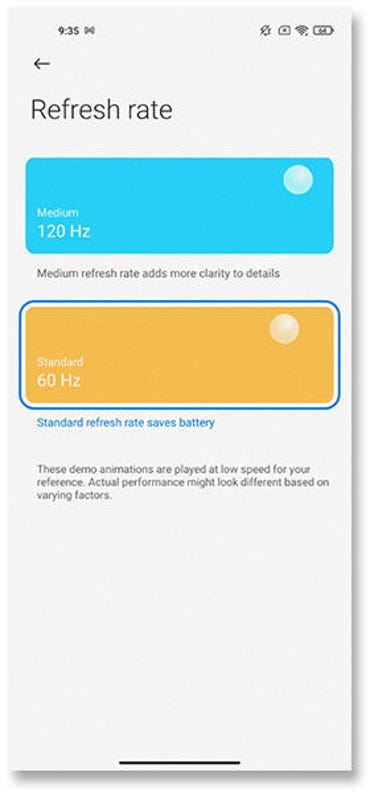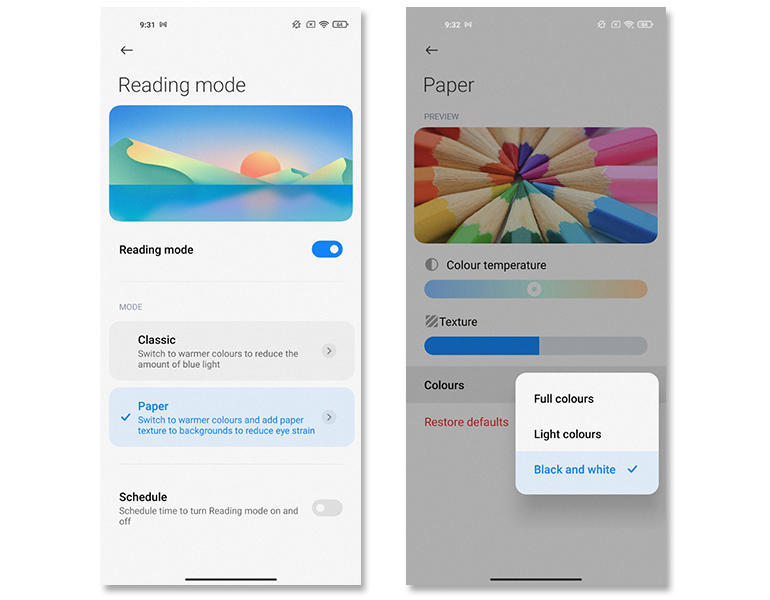At the high end of its range, Xiaomi offers smartphones with a good, if not comprehensive, selection of advanced features at a competitive price. Last year’s Mi 10T Pro 5G is a good example. Now, the Chinese company is first to market with a globally available handset powered by Qualcomm’s Snapdragon 888 5G Mobile Platform, in the shape of its new flagship Mi 11, which sells for a price that suggests another excellent value-for-money choice: €749 with 8GB of RAM and 128GB of internal storage, or €799 with 8GB/256GB.
As Huawei’s stock falls due to the US ban on Google Mobile Services, so Xiaomi’s is rising, to the point where the company took third place behind Apple and Samsung in the Q4 2020 worldwide smartphone market. But does the Mi 11 live up to expectations?

The 6.81-inch Xiaomi Mi 11 comes in Special Edition, Midnight Gray, Cloud White and Horizon Blue colours.
Image: XiaomiXiaomi’s latest flagship phone certainly looks the part. My review unit had a backplate whose official colour is Horizon Blue, although depending on the light it’s reflecting, the colour shades nicely from grey through blue to lavender. The rear camera setup is large and unmissable, with main lens sitting very proud. The three-layered riser is perhaps designed to disguise quite how far the lens juts out from the base, but when the handset is resting on a desk the camera bump creates a big protrusion, and tapping the screen anywhere on its left side causes a wobble.

For some reason, the 120Hz refresh rate is described as ‘medium’.
Image: Sandra Vogel / ZDNetThe Mi 11 doesn’t have an IP rating for dust and water resistance, which might be a stumbling block for some potential buyers. The absence of a 3.5mm headset jack is less of an issue, although again it might irritate some people. There is an IR blaster in the top edge, and among the pre-installed apps Mi Remote lets you use this to manage all manner of IR-equipped devices.
The Mi 11 is big and reasonably weighty at 74.6 mm wide by 164.3mm deep by 8.06mm thick and 196g. The size is down to the huge 6.81cm screen, which has minimal top and bottom bezels and curves into the long edges. Corning’s toughest Gorilla Glass Victus provides protection. There’s a tiny front camera cut-out in the top left corner that’s barely noticeable. The AMOLED display has a resolution of 3,200 by 1,440 pixels (515ppi), and it’s simply superb, although it’s worth noting that I found it impossible to reach across it one-handed.
The screen has a maximum refresh rate of 120Hz, and an automatic selection facility that decides whether to deploy the full 120Hz or drop to 60Hz. I’d have liked to be able to set this at the upper rate permanently, but that doesn’t seem to be an option — perhaps because Xiaomi is wary of compromising battery life. Oddly, 120Hz is termed ‘medium’ rather than ‘high’. What’s going on there, I wonder?
Handset makers like to talk up the touch sampling rate these days — that’s the speed at which the screen responds to finger taps, which is 480Hz for the Mi 11. It’s fair to say that I never had to wait for this phone to do anything I asked of it — but that’s not usually an issue for higher-end handsets. Gamers are most likely to perceive a real benefit from a high touch sampling rate, along with users of the in-screen fingerprint sensor.

Reading mode settings include a paper-like ‘texture’ and different colour settings.
Images: Sandra Vogel / ZDNetMy only real screen-related grumble concerns Reading mode, which pops the screen into different colour saturations, and can also apply a paper-like ‘texture’. There’s a lot to play with here, and you can set a timed schedule for Reading Mode to come on and off — but what you can’t do is have it kick in when a particular app is launched. As far as I’m aware only OnePlus handsets can be configured to change screen mode when an app is launched. Come on everyone else, do catch up!
Xiaomi rightly highlights the new Snapdragon 888 chipset with its integrated 5G mode (the Mi 11 supports two SIMs, by the way). The 5nm processor is supported by 8G of RAM and is fast. Not surprisingly it knocked every other handset I’ve reviewed out of the water, delivering average Geekbench 5 scores of 1129 (single core) and 3704 (multi core).
But do the powerful processor and the demands of that large high-resolution screen impact battery life? Yes, they do — and as noted earlier that’s probably one reason the screen refresh rate can’t be cranked up to 120Hz as standard. The Mi 11’s 4600mAh battery lasted for just 13 hours 29 minutes under the PC Mark Work 2.0 for Android battery rundown test, which is a long way off the pace. Relatively basic YouTube viewing for three hours depleted a fully charged battery by 19%, suggesting battery life of just under 16 hours.
Battery life shouldn’t be an issue though, and all-day operation should be widely achievable. There is 55W ‘turbo’ charging for a quick power boost if needed, as well as support for 50W wireless charging. And if you’re inclined to charge other handsets from the Mi 11 10W reverse wireless charging is also available.
My Xiaomi Mi 11 review unit came with 128GB of internal storage, of which 20GB was used out of the box, leaving 108GB free. That 20GB is used by Android 11, Xiaomi’s MIUI 12 overlay, and a fair number of pre-installed apps, one of which — Mi Remote — I’ve already noted. The apps are mostly filed away in folders called Tools, Games and More Apps, with the latter containing staples like Amazon Shopping, FaceBook, TikTok, LinkedIn and eBay, along with the travel booking app Agoda and WPS Office. Elsewhere you’ll find things like the Opera web browser, a notes app, file manager and a Themes app for personalising the handset’s look as well as ringtones. You can delete a lot of this if it’s surplus to requirements.
The camera setup is highlighted front and centre on Xiaomi’s website, and the emphasis is on quality rather than quantity. The in-screen front camera is a 20MP f/2.2 unit that’s capable of 1080p video at 30fps and 720p slow-motion video at 120fps. It also takes a good selfie, which is the main thing, really.
The rear camera array comprises three cameras, the main one being a high-resolution 108MP sensor with an f/1.85 wide-angle lens and optical image stabilisation (OIS). This is joined by a 13MP f/2.4 ultra-wide-angle (123°) camera and a 5MP f/2.4 telemacro (3-10cm) camera. The autofocus telemacro lens is particularly rewarding to use, although I’d have liked OIS too.
You can shoot 8K video at 30fps and 24fps, or 4K video at 60fps and 30fps.

Images shot with the telemacro camera (left) and main 108MP camera at 30x zoom (right).
Images: Sandra Vogel / ZDNetThe main camera delivered perfectly good point-and-shoot images, with plenty of detail and good colour, and using the full screen to frame images can create some pleasing compositions. But don’t be fooled by the 30x (digital) zoom available for still images. As you can see from my woodpecker photo, it’s not really worth the bother — and good luck holding the camera steady to take a shot of even my sample’s quality. A telephoto camera would improve matters, but would also come at a cost.

Conclusions
The Xiaomi Mi 11 showcases the new Snapdragon 888 chipset, with high-end features – particularly the 120Hz AMOLED screen — that complement it well. The camera array is well thought-out (although optical zoom would be welcome), and while battery life isn’t stellar, thanks to the high-end chipset and display, fitting in a larger battery would have been quite a challenge.
Xiaomi has done well to hit such a competitive price point for the Mi 11, and right now it sets the bar for other mid-priced flagship-class handsets to aim at.
RECENT AND RELATED CONTENT
Xiaomi’s new Mi 11 flagship smartphone arrives with top-end Snapdragon 888 chipset
Xiaomi Mi 10T Pro 5G review: Flagship specs at a good price, but plenty of missing features
Xiaomi Poco X3 NFC review: A smartphone that punches above its budget price
Xiaomi denies any ties with Chinese military
Read more reviews























